Transition words are links between ideas, sentences or paragraphs. They help create a smooth transition between every part of a text.
There are multiple reasons to use transition words.
These words can help to organize writing or speech using a clear sequence for ideas or arguments.
They can make writing or speech more structured and coherent.
Here are some transition words to order texts:
|
Order |
|||
|
first, second, third* |
following |
afterwards |
before, after |
|
firstly, secondly, thirdly* |
this time |
earlier |
previously, then |
|
to begin |
soon after |
later |
finally |
* Transition words of order must be coherent with one another. If “first” is used in the beginning, it should be followed by “second.”
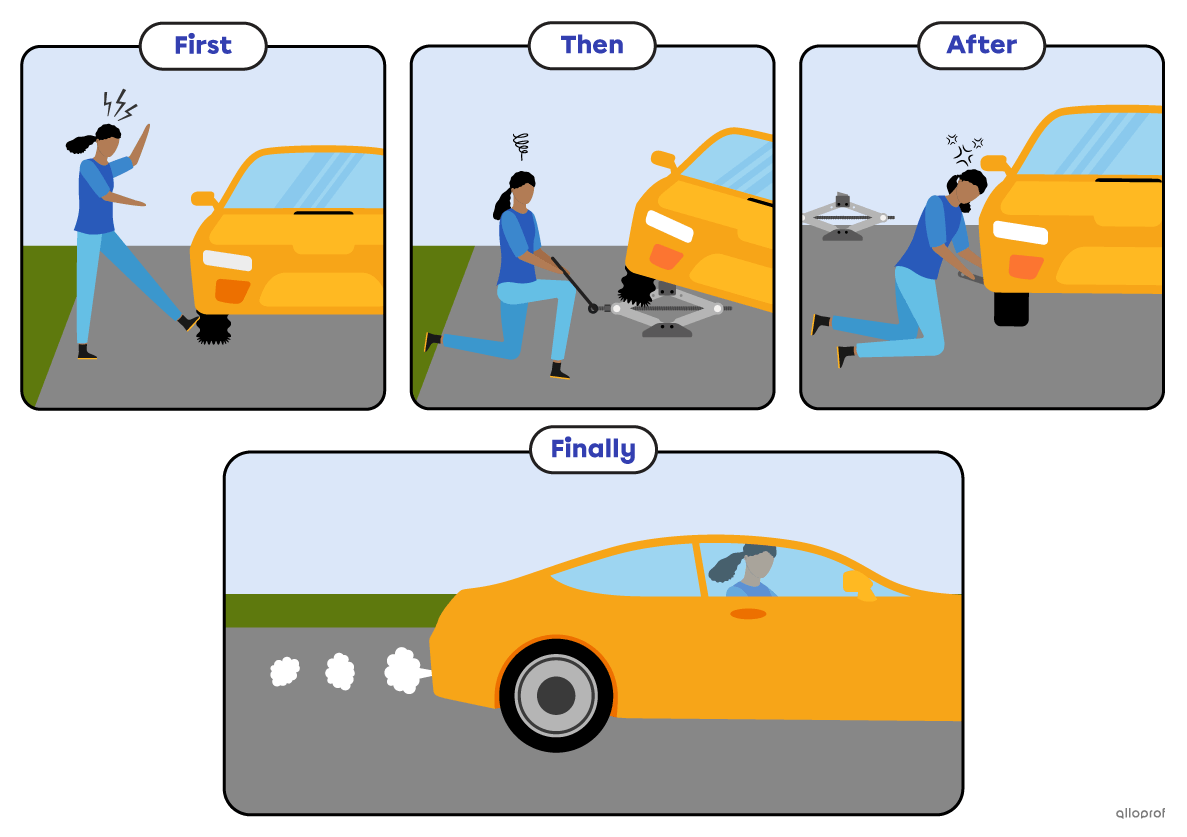
To change a flat tire, Adria loosens the tire’s lug nuts. She uses a jack to lift the car. She removes the flat tire. Adria replaces the flat tire with a spare tire. She tightens its lug nuts. Adria stores the flat tire. She drives away.
First, to change a flat tire, Adria loosens the tire’s lug nuts. Then, she uses a jack to lift the car and removes the flat tire. After, she replaces the flat tire with a spare tire and tightens its lug nuts. Finally, Adria stores the flat tire and drives away.
These words can help to show the relationship between two ideas or events: they establish how one thing leads to another.
They are useful in writing or speaking to explain the reasons behind something or the effects resulting from a particular action or event.
Here are some transition words that show cause and effect:
|
Cause & Effect |
|||
|
as a result |
therefore |
owing to |
consequently |
|
because |
as a consequence |
on account of |
thus |
|
due to |
hence |
because of |
so |
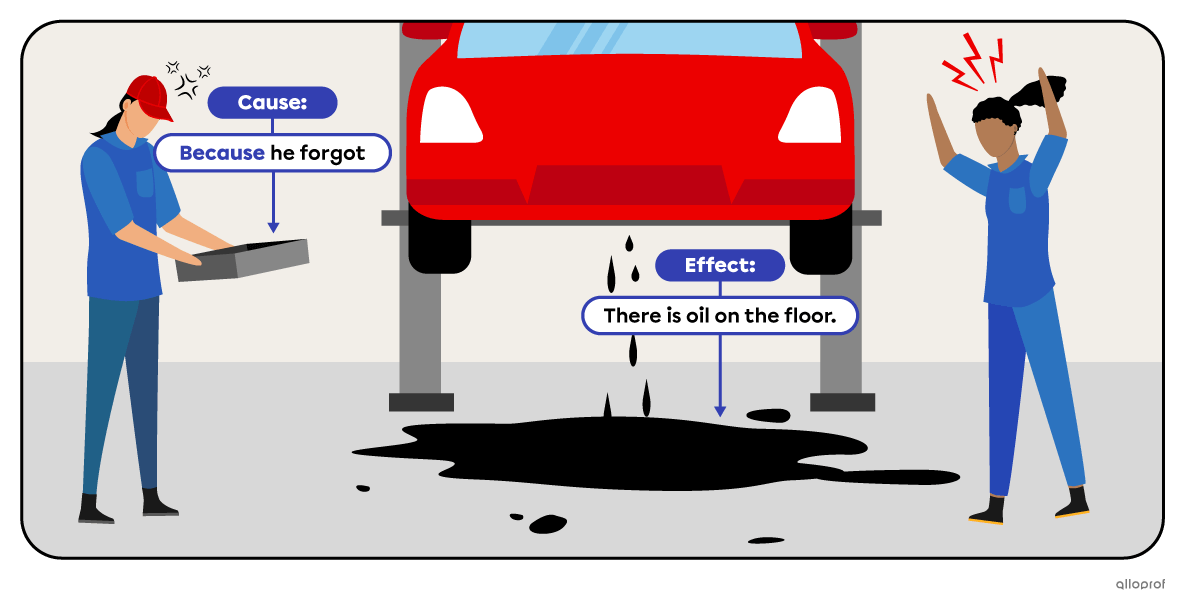
There is oil on the floor of her garage. Adria’s assistant forgot to put an oil pan under the car.
There is oil on the floor of her garage because Adria’s assistant forgot to put an oil pan under the car.
These words can help to expand on an idea or argument by providing additional information or evidence.
Here are some transition words to add to an idea:
|
Addition |
|||
|
furthermore |
and |
besides that |
as well |
|
additionally |
besides |
in addition |
also |
|
moreover |
too |
even |
along with |
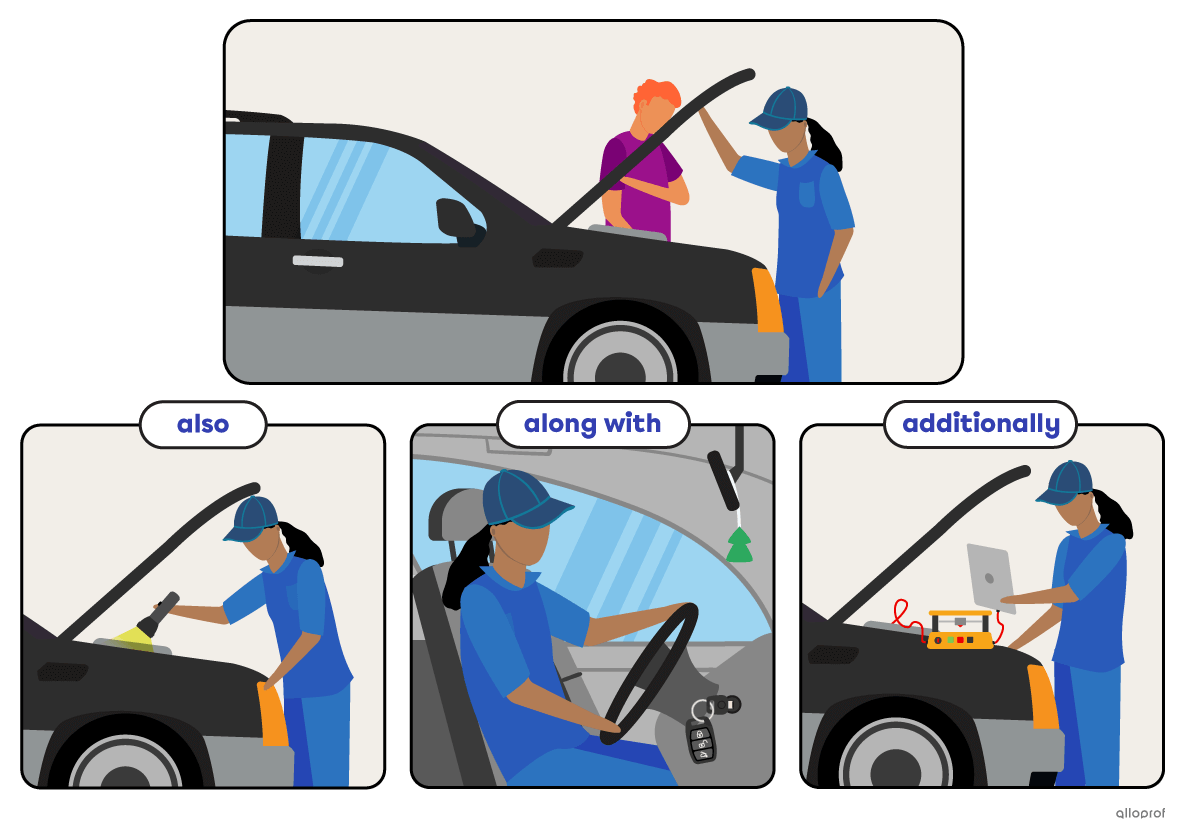
To find out what’s wrong with a car, Adria can listen to the customer’s description. She can inspect the vehicle. She can test drive it. She can use diagnostic tools.
To find out what’s wrong with a car, Adria can listen to the customer’s description. She can also inspect the vehicle along with test driving it. Additionally, she can use diagnostic tools.
These words can help to show the differences between two ideas or arguments. They can be useful in writing or speaking when you are trying to compare and contrast two different ideas or perspectives.
Here are some transition words to contrast ideas in texts:
|
Contrast |
|||
|
however |
nonetheless |
while |
despite |
|
in contrast |
on the other hand |
whereas |
but |
|
although |
regardless of |
nevertheless |
yet |
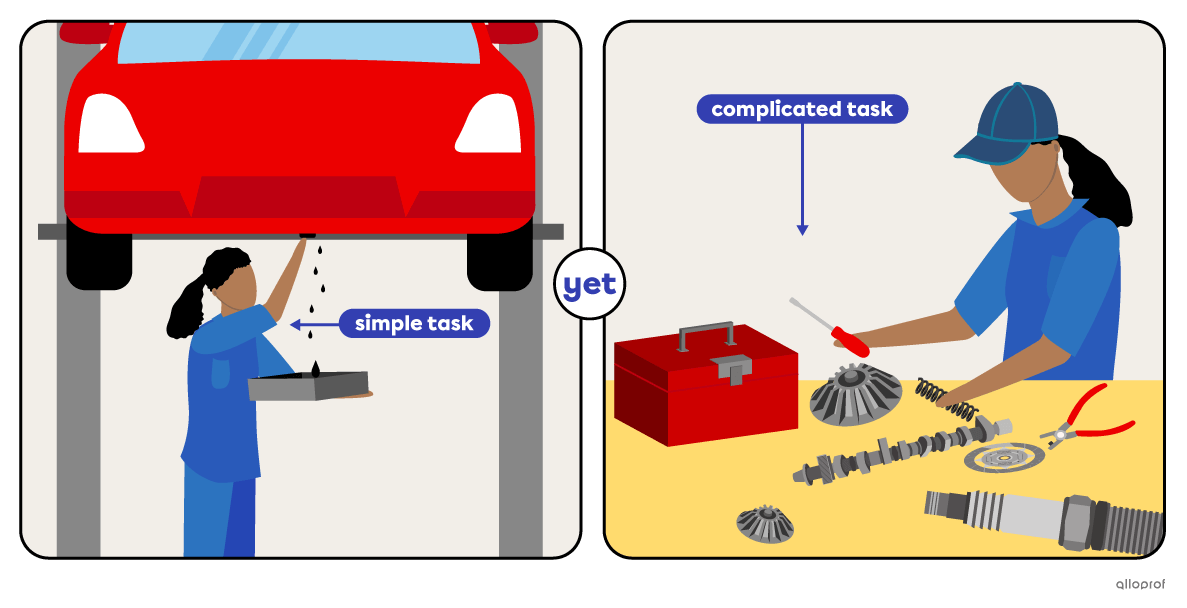
Adria can perform simple tasks like oil changes every day. She can accomplish complex tasks like rebuilding car transmissions.
Adria can perform simple tasks like oil changes every day yet she can accomplish complex tasks like rebuilding car transmissions.
These words can help to show the similarities between two ideas or arguments. They can be useful in writing or speaking when you are trying to compare two ideas or perspectives.
Here are some examples of transition words to compare ideas in texts:
|
Comparison |
|||
|
in the same way |
as well as |
in the same maneer |
both... and |
|
likewise |
alike |
by comparison |
just as |
|
similarly |
as a matter of fact |
just like |
in comparison |
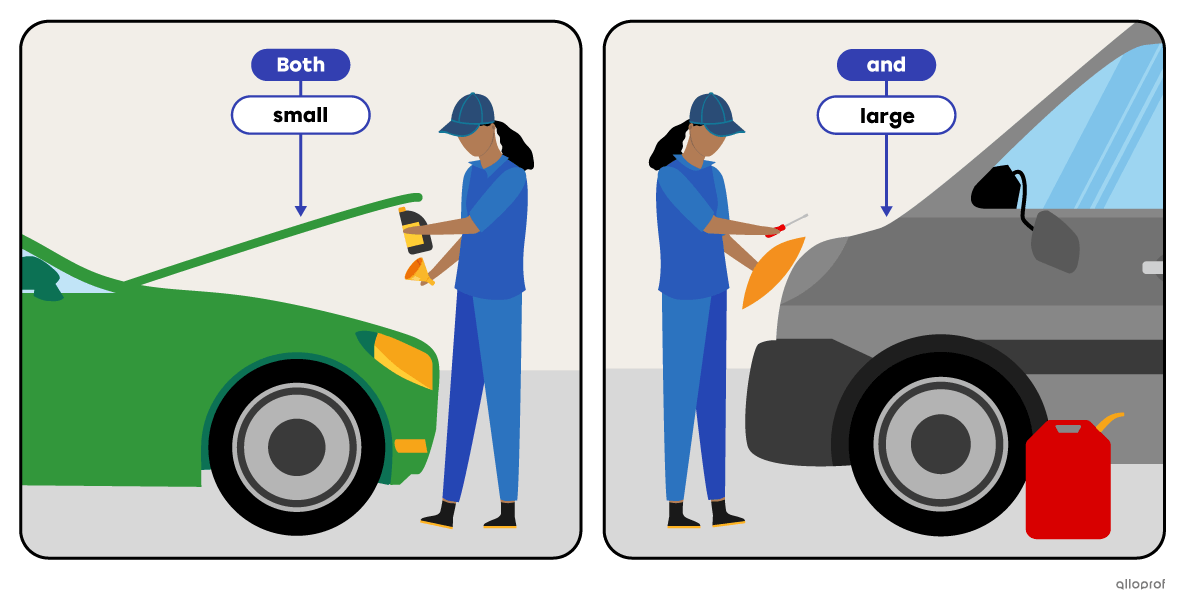
Small vehicles need repair. Large vehicles need repair.
Both small vehicles and large vehicles need repairs.
These words can help to strengthen and clarify a point or argument and can be used to help the reader or listener better understand the importance of the information being presented.
Here are some transition words for emphasis:
|
Emphasis |
|||
|
indeed |
in fact |
without question |
especially |
|
of course |
absolutely |
surely |
obviously |
|
certainly |
without a doubt |
unquestionably |
definitely |
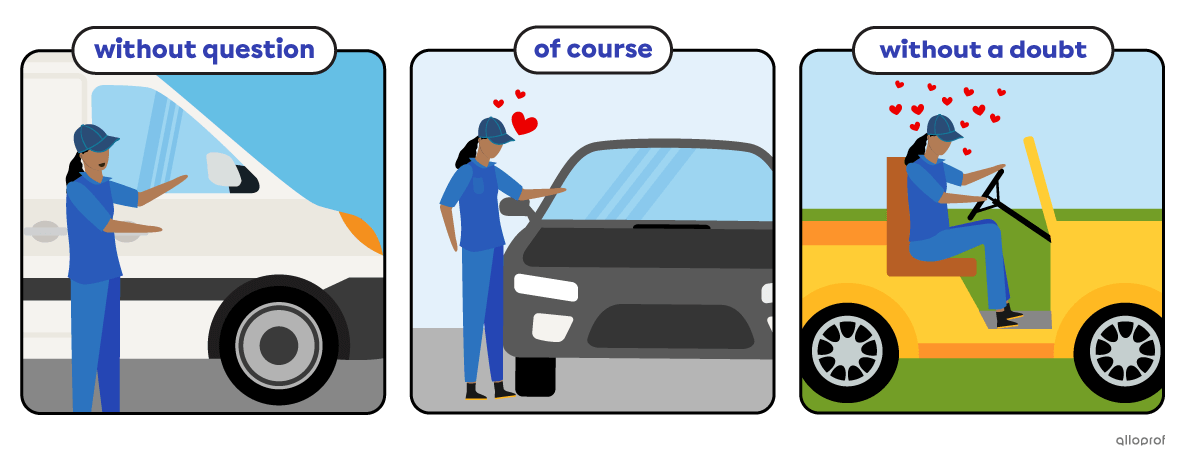
Adria likes vans. She likes sedans. She likes jeeps.
Without question Adria likes vans. Of course, she likes sedans too, but without a doubt jeeps are her favourite.
These words can help to provide concrete examples or evidence to support an idea or argument. They can help the reader or listener better understand a concept or idea by providing specific examples or details.
Here are some examples of transition words to illustrate ideas in texts:
|
Illustration |
|||
|
for example |
to illustrate |
namely |
like |
|
for instance |
as an illustration |
to give an example |
including |
|
such as |
specifically |
illustrated by... |
in particular |
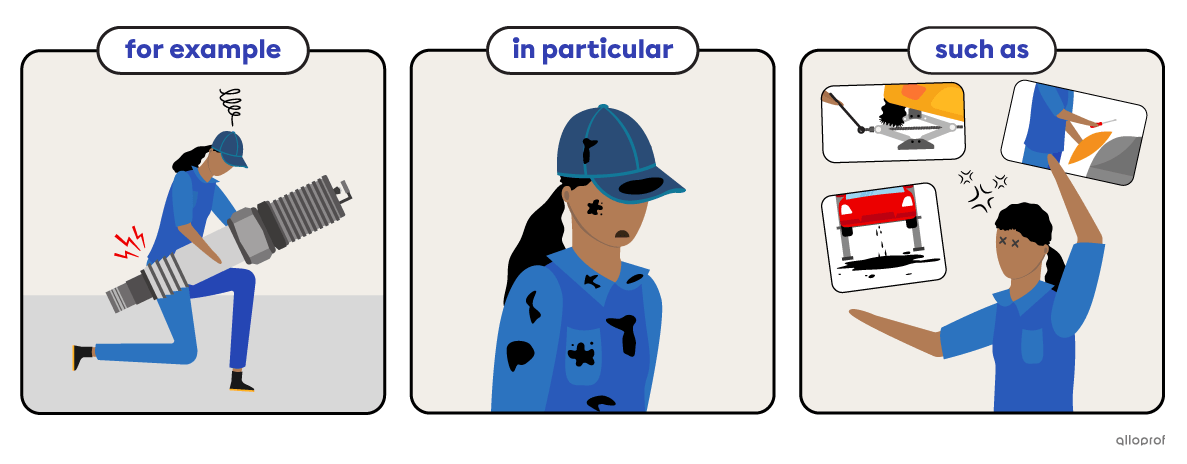
Being a mechanic is difficult. Adria has to lift heavy objects. She ends up covered in motor oil. She deals with many problems.
Being a mechanic is difficult. For example, Adria has to lift heavy objects. In particular when she ends up covered in motor oil. She deals with many problems, such as engine failure and faulty spark plugs.
These words can help to bring your writing or speech to a close by providing a brief overview of the main points or ideas. They can help the reader or listener understand the key takeaways from your writing or speech and can help reinforce the main points or arguments that you have made.
Here are some transition words to summarize texts:
|
Summary |
|||
|
in summary |
to sum up |
in brief |
to conclude |
|
to summarize |
ultimately |
in essence |
finally |
|
in conclusion |
in the end |
to wrap up |
in short |
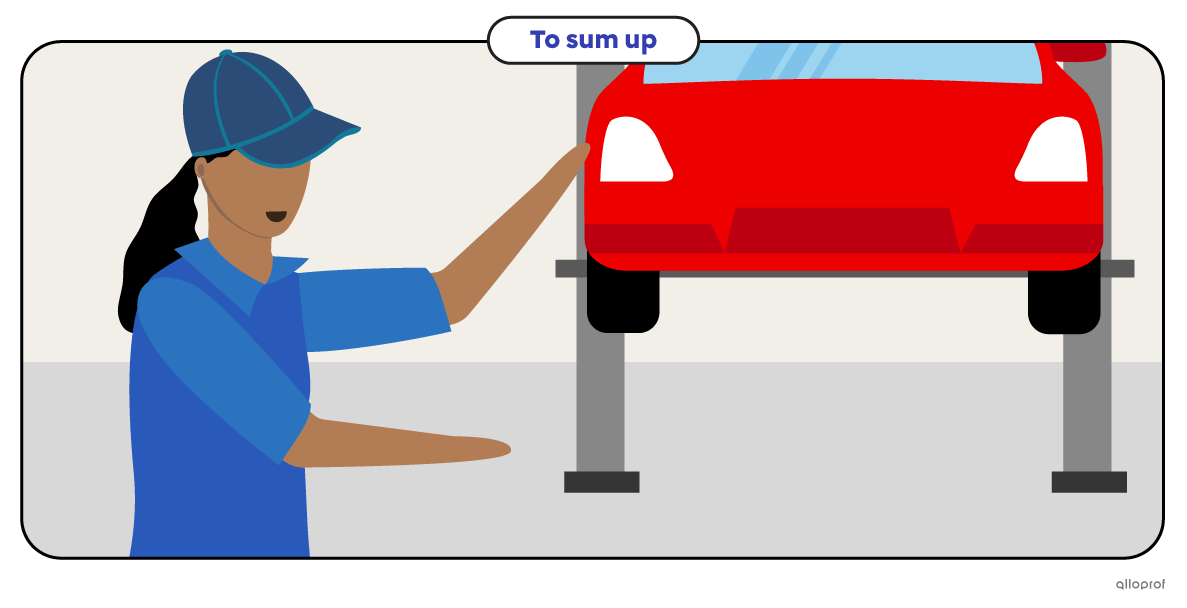
Adria’s job brings the best out of her and she enjoys every minute of it.
To sum up, Adria’s job brings the best out of her and she enjoys every minute of it.
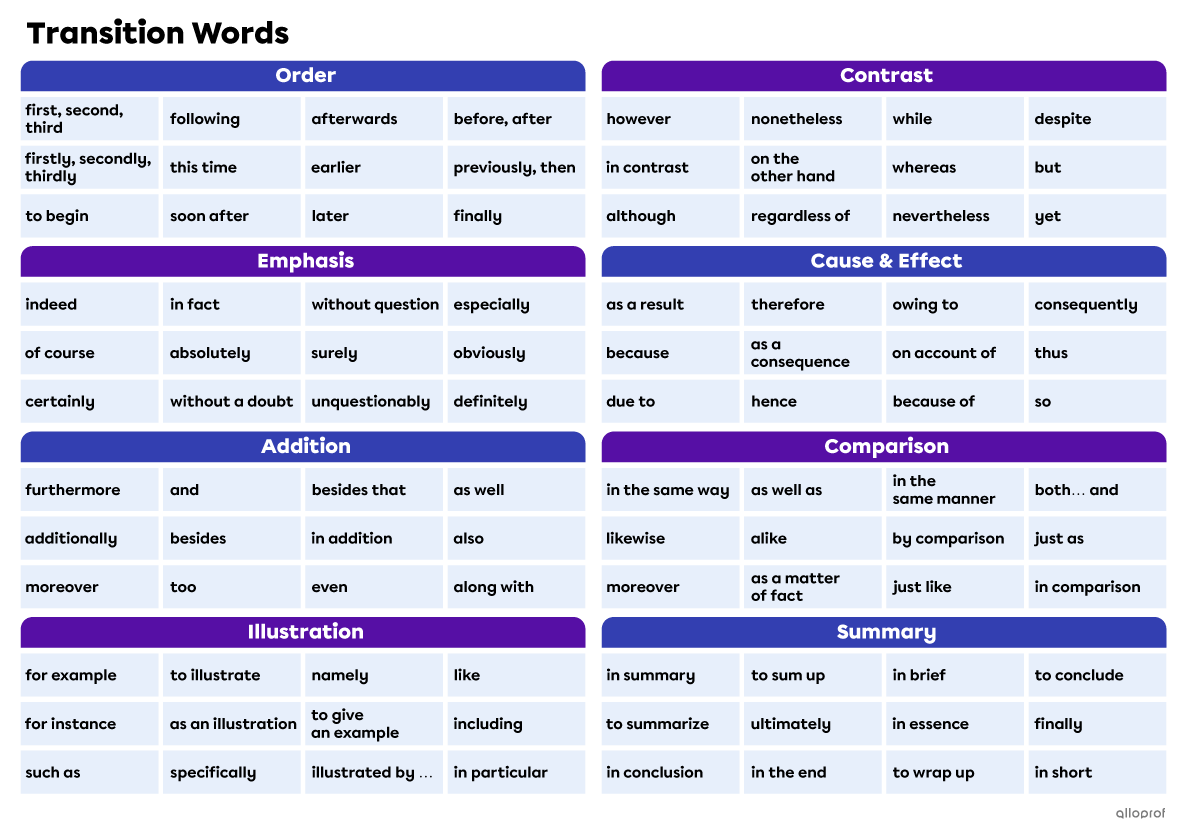
Points to remember when using punctuation with transition words.
-
Use a comma after transition words when they begin a sentence.
For example, most mechanics do not work on Sundays.
First, mechanics follow specific steps to find a car's problem. -
Use a semicolon to connect two complete sentences.
Mechanics repair different types of vehicles; therefore, they could repair my small car. -
Use commas before and after transition words if they are in the middle of a sentence.
They, however, prefer certain types of vehicles.